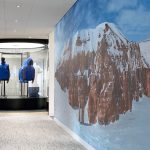Nike, Inc. (NKE) unveiled the latest expansion of its European Logistics Campus in Belgium, to accelerate the company’s drive toward “the supply chain of the future.”
The expansion will purportedly make Nike’s European operations more efficient, more responsive and more sustainable, enabling growth by serving consumers across Nike.com, Nike retail and wholesale partners in 38 countries, all from a single inventory location.
“Globally, we ship more than one billion units of footwear, apparel and equipment every year, which demands an agile, innovative and sustainable supply chain,” said Eric Sprunk, Chief Operating Officer, Nike, Inc. “The expansion of our European Logistics Campus demonstrates our commitment to bring the full range of Nike products to consumers more quickly, where and when they want it – whether it’s one pair of Flyknit shoes or a 10,000-item order for a retailer.”
This latest investment in a state-of-the-art centralized distribution network in the center of Europe, which employs more than 3,000 people, allows Nike to serve a vast network of retailers and consumers not just on the continent, but across the world.
“Our facilities in Belgium are a pinnacle example of how sustainable innovation is embedded into Nike’s growth strategy, which enables us to maximize our performance while minimizing our footprint,” said Bert Stevens, Vice President of Supply Chain Operations, Nike Europe. “The success of this expansion is a result of excellent teamwork, with great cooperation from local and national governments, and support from many partners and the local community.”
Key features of this new facility include:
The European Logistics Campus uses 100 percent renewable energy, and sources energy from five locally generated sources: wind, solar, geothermal, hydroelectric and biomass. Six wind turbines on-site produce enough electricity to power 5,000 households, and the on-site solar panels cover the size of three soccer fields.
The facility is fed by an infrastructure of canals, railways and highways. 99% of inbound containers reach the local container park, by water, not road, saving 14,000 truck journeys a year.
Moving away from a traditional structure that requires more steel and concrete, the warehouse is a rack-supported building, reducing waste and material used, thereby minimizing its footprint.
More than 95 percent of waste generated on-site is recycled. Pathways used by employees around the facility are made from recycled footwear material.
Natural light provided by many windows, a unique daylight capture system and smart, automated LED lighting help to reduce electricity costs, reduce environmental impact and provide a more productive workplace.
The facility was designed to expand while supporting biodiversity. For example, sheep will help naturally maintain the landscaping, and on-site beehives will contribute to biodiversity through the pollination of flowers around the facility and in the local area.














